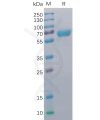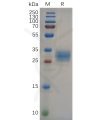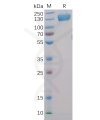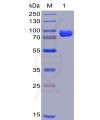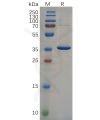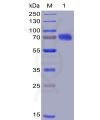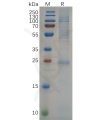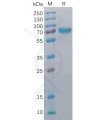| Target | |
|---|---|
| Synonyms | Fibroblast Growth Factor 1;FGF-1;Acidic Fibroblast Growth Factor;aFGF;Endothelial Cell Growth Factor;ECGFHeparin-Binding Growth Factor 1;HBGF-1;FGF1;FGFA |
| Description | Recombinant Human Fibroblast Growth Factor 1/Fibroblast Growth Factor Acidic is produced by our E.coli expression system and the target gene encoding Ala2-Asp155 is expressed. |
| Delivery | In Stock |
| Uniprot ID | P05230 |
| Expression Host | E.coli |
| Tag | |
| Molecular Characterization | Not available |
| Molecular Weight | 17.3 KDa |
| Purity | Greater than 95% as determined by reducing SDS-PAGE. |
| Formulation & Reconstitution | Lyophilized from a 0.2 μm filtered solution of PBS, pH 7.4. |
| Storage & Shipping | Store at -20°C to -80°C for 12 months in lyophilized form. After reconstitution, if not intended for use within a month, aliquot and store at -80°C (Avoid repeated freezing and thawing). Lyophilized proteins are shipped at ambient temperature. |
| Background | FGF acidic, also known as ECGF, FGF-1and HBGF-1, is a non-glycosylated heparin binding growth factor that is expressed in the brain, kidney, retina, smooth muscle cells, bone matrix, osteoblasts, astrocytes and endothelial cells. It is a mitogenic peptide that is produced by multiple cell types and stimulates the proliferation of cells of mesodermal, ectodermal, and endodermal origin. Its association with heparan sulfate is a prerequisite for activation of FGF receptors. Internalized FGF acidic migrates to the nucleus where it is phosphorylated by nuclear PKC delta, exported to the cytosol, dephosphorylated, and degraded. Intracellular FGF acidic inhibits p53 activity and proapoptotic signaling. |
| Usage | Research use only |
| Conjugate | Unconjugated |
Human FGFa (154AA) Protein
Price: 50 μg $360.00
Product Data Dima FAQ
Images Dima FAQ
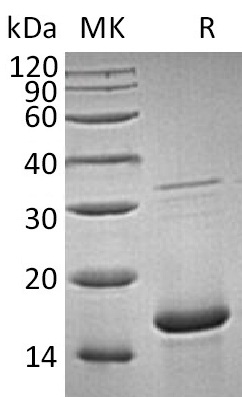
Figure 1. Greater than 95% as determined by reducing SDS-PAGE.
Related Products
ECD Proteins
SKU: PME100016 Target: CD48 Tag: C-Mouse Fc and 6×His Tag
Price: 10μg $91.00; 50μg $348.00 ; 100 μg $522.00
ECD Proteins
SKU: PME100655 Target: FOLR2 Tag: C-6×His Tag
Price: 10μg $91.00; 50μg $328.00 ; 100μg $488.00
ECD Proteins
SKU: PME100005 Target: CD22 Tag: C-Human Fc and 6×His Tag
Price: 10μg $82.00; 50μg $320.00 ; 100 μg $480.00
ECD Proteins
SKU: PME100004 Target: CD38 Tag: C-Human Fc and 6×His Tag
Price: 10μg $78.00; 50μg $310.00 ; 100 μg $460.00
ECD Proteins
SKU: PME100648 Target: NEFL Tag: N-6×His Tag
Price: 10μg $82.00; 50μg $320.00 ; 100 μg $480.00
ECD Proteins
SKU: PME100014 Target: CD28 Tag: C-Mouse Fc and 6×His Tag
Price: 10μg $96.00; 50μg $370.00 ; 100 μg $555.00
ECD Proteins
SKU: PME100009 Target: SIRPa Tag: C-Human Fc and 6×His Tag
Price: 10μg $82.00; 50μg $320.00 ; 100 μg $480.00
ECD Proteins
SKU: PME100649 Target: KRAS Tag: C-6×His Tag
Price: 10μg $82.00; 50μg $320.00 ; 100 μg $480.00
ECD Proteins
SKU: PME100015 Target: CD40 Tag: C-Mouse Fc and 6×His Tag
Price: 10μg $82.00; 50μg $320.00 ; 100 μg $480.00

